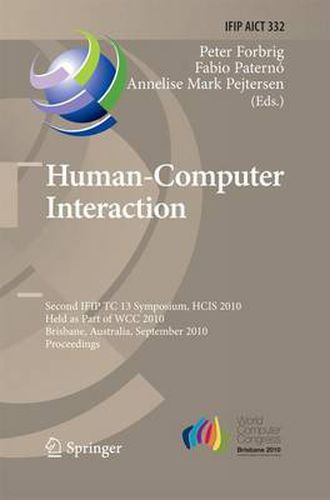Readings Newsletter
Become a Readings Member to make your shopping experience even easier.
Sign in or sign up for free!
You’re not far away from qualifying for FREE standard shipping within Australia
You’ve qualified for FREE standard shipping within Australia
The cart is loading…






This title is printed to order. This book may have been self-published. If so, we cannot guarantee the quality of the content. In the main most books will have gone through the editing process however some may not. We therefore suggest that you be aware of this before ordering this book. If in doubt check either the author or publisher’s details as we are unable to accept any returns unless they are faulty. Please contact us if you have any questions.
The IFIP World Computer Congress (WCC) is one of the most important conferences in the area of computer science at the worldwide level and it has a federated structure, which takes into account the rapidly growing and expanding interests in this area. Informatics is rapidly changing and becoming more and more connected to a number of human and social science disciplines. Human-computer interaction is now a mature and still dynamically evolving part of this area, which is represented in IFIP by the Technical Committee 13 on HCI. In this WCC edition it was interesting and useful to have again a Symposium on Human-Computer Interaction in order to p- sent and discuss a number of contributions in this field. There has been increasing awareness among designers of interactive systems of the importance of designing for usability, but we are still far from having products that are really usable, and usability can mean different things depending on the app- cation domain. We are all aware that too many users of current technology often feel frustrated because computer systems are not compatible with their abilities and needs in existing work practices. As designers of tomorrow’s technology, we have the - sponsibility of creating computer artifacts that would permit better user experience with the various computing devices, so that users may enjoy more satisfying expe- ences with information and communications technologies.
$9.00 standard shipping within Australia
FREE standard shipping within Australia for orders over $100.00
Express & International shipping calculated at checkout
This title is printed to order. This book may have been self-published. If so, we cannot guarantee the quality of the content. In the main most books will have gone through the editing process however some may not. We therefore suggest that you be aware of this before ordering this book. If in doubt check either the author or publisher’s details as we are unable to accept any returns unless they are faulty. Please contact us if you have any questions.
The IFIP World Computer Congress (WCC) is one of the most important conferences in the area of computer science at the worldwide level and it has a federated structure, which takes into account the rapidly growing and expanding interests in this area. Informatics is rapidly changing and becoming more and more connected to a number of human and social science disciplines. Human-computer interaction is now a mature and still dynamically evolving part of this area, which is represented in IFIP by the Technical Committee 13 on HCI. In this WCC edition it was interesting and useful to have again a Symposium on Human-Computer Interaction in order to p- sent and discuss a number of contributions in this field. There has been increasing awareness among designers of interactive systems of the importance of designing for usability, but we are still far from having products that are really usable, and usability can mean different things depending on the app- cation domain. We are all aware that too many users of current technology often feel frustrated because computer systems are not compatible with their abilities and needs in existing work practices. As designers of tomorrow’s technology, we have the - sponsibility of creating computer artifacts that would permit better user experience with the various computing devices, so that users may enjoy more satisfying expe- ences with information and communications technologies.